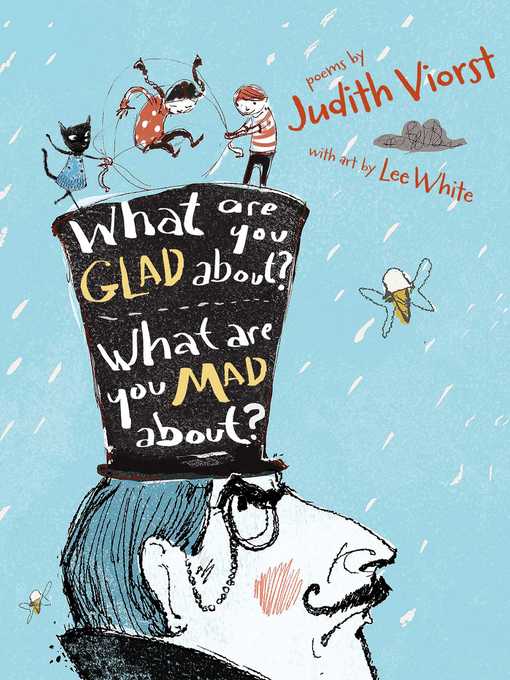
What Are You Glad About? What Are You Mad About?
Poems for When a Person Needs a Poem
فرمت کتاب
ebook
تاریخ انتشار
2016
Lexile Score
670
Reading Level
3
نویسنده
Lee Whiteشابک
9781481423571
کتاب های مرتبط
- اطلاعات
- نقد و بررسی
- دیدگاه کاربران
نقد و بررسی

December 21, 2015
In poems grouped into categories including school, family, and friends, Viorst thoughtfully explores the ups and downs of children’s lives, without glossing over tough moments—or humans’ sometimes less-than-admirable instincts. In one poem, the narrator contemplates her somewhat distant father’s happiness (“He’s always watching over us./ Here’s what I want to know:/ Is anyone watching over him?”), while a retaliatory entry later on addresses “What to Do with a Bully” (“You could give him a fat lip,/ Stick your foot out—make him trip”). In loose cartoons accented with a drab pale blue, White (The Maine Coon’s Haiku) amplifies the strong emotions at play, from delight in a grandfather’s grilled-cheese-making prowess to sadness over losing a best friend (White shows a girl staring sadly out the window, a severed tin-can “phone” in her hand). Whatever readers’ mood may be, they will probably find a poem that suits it. Ages 6–9. Author’s agent: Mickey Choate, Choate Agency. Illustrator’s agent: Paul Rodeen, Rodeen Literary Management.

January 1, 2016
Gr 3-6-In this newest collection of poetry, Viorst captures the experience of childhood through 11 rich categories, such as school, family, friends, and seasons. With a rhyming narrative, humor, and a sampling of haiku, Viorst touches on themes relevant to children, including losing friendships, bullying, coping with bothersome siblings, and facing fears. White's soft, whimsical illustrations help create an imaginative space for readers to explore troubling emotions. In "The Best and the Worst," for instance, a young boy walks a tightrope of Christmas lights between his parents, with his dad offers a surfboard on one side and his mom a horse on the other. Viorst writes, "They'd promise me Hawaii/They'd promise me a horse, /If that made me not notice/They're getting a divorce." Other, more humorous verse lightens the mood. In "Arithmetrick," Viorst challenges kids to take any number, and after a series of calculations, they'll realize they end up with the number 10. Children will delight in figuring out the trick and trying it out on others. VERDICT Although there are missteps with some rhymes, generating an uneven selection, Viorst's comedic talents, ability to engage readers, and coverage of universal topics make this an appealing choice.-Rachel Zuffa, Racine Public Library, WI
Copyright 2016 School Library Journal, LLC Used with permission.

























دیدگاه کاربران